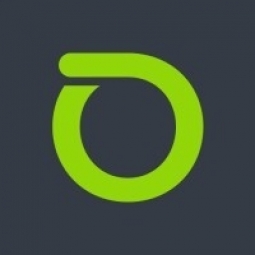下载PDF
Cerner Corporation Gains Critical Real-Time Visibility into Cloud-Based Service Delivery with NETSCOUT
技术
- 平台即服务 (PaaS) - 连接平台
适用行业
- 医疗保健和医院
适用功能
- 离散制造
- 物流运输
用例
- 过程控制与优化
- 实时定位系统 (RTLS)
- 预测性维护
服务
- 云规划/设计/实施服务
- 数据科学服务
挑战
医疗技术公司 Cerner Corporation 面临着确保其基于云的服务的性能、可用性和质量的挑战,该服务用于跨医疗办公室和医院系统的数字化患者信息。该公司需要保持系统响应能力和 99.999% 可用性的运营商级网络正常运行时间。对于 Cerner 来说,确保网络和应用程序服务级别的性能以保护最终用户体验也至关重要。多年来,Cerner 实现了大幅增长,其网络规模、用户以及应用程序和用户会话数量增加了三倍。因此,即时访问内部和外部信息成为 Cerner 服务的关键组成部分,也是确保客户满意度的主要因素。过去,当出现问题时,有限的可见性会导致 Cerner 运营团队陷入漫长的调查和解决流程,这会影响甚至可能危及对合同 SLA 的遵守。由于 Cerner 提供的服务至关重要,违反 SLA 可能会给客户带来负面的运营和财务后果。
关于客户
Cerner Corporation 是一家医疗技术公司,30 多年来一直致力于实现让医疗保健更安全、更高效的愿景。该公司从数字化纸质流程开始,目前提供最全面的信息软件、专业服务、医疗设备集成、远程托管以及雇主健康和保健服务。Cerner 系统已获得全球约 14,000 家机构的许可,并被从个人消费者到单一医生诊所、医院、雇主和整个国家/地区的所有人使用。因此,随时随地访问数字化患者信息对于依赖 Cerner 解决方案的医疗实践至关重要。如果无法访问这些信息,即使是很短的时间,也可能对患者、医生和 Cerner 造成严重后果。基于此,Cerner 网络以及遍历该网络的数据和应用程序的健康状况对于业务的成功和整体用户体验至关重要。
解决方案
为了提供对应用程序和网络性能的全面监控,并确保最高的性能、服务质量和正常运行时间,Cerner 依赖于 NETSCOUT 的 nGenius 性能管理解决方案。该解决方案由 nGeniusONE™ 服务保证平台、NETSCOUT 智能数据源(例如 InfiniStream® 设备)和 nGenius 数据包流交换机系列组成,可实现对整个网络流量的简化和可扩展访问。nGenius 解决方案广泛应用于 Cerner 的大量物理和虚拟化环境中。端到端性能监控是 Cerner 服务交付战略的重要组成部分。nGenius 解决方案监控 Cerner 的环境,向团队发出潜在问题和性能异常警报,以帮助解决问题并确保服务交付和可用性。 nGenius 解决方案为 IT 组织提供了其网络、应用程序和基于 Citrix 的服务的全面可视性,并支持性能管理、主动服务健康管理和分层故障排除,以及面向任务的工作流程,以便快速分类和解决问题。这些高级功能使 Cerner 团队能够通过 Cerner 的网络、应用程序和服务器组中利用的通用解决方案保护其服务免于降级和停机,优化服务性能并简化 IT 运营。
运营影响
数量效益
相关案例.

Case Study
Hospital Inventory Management
The hospital supply chain team is responsible for ensuring that the right medical supplies are readily available to clinicians when and where needed, and to do so in the most efficient manner possible. However, many of the systems and processes in use at the cancer center for supply chain management were not best suited to support these goals. Barcoding technology, a commonly used method for inventory management of medical supplies, is labor intensive, time consuming, does not provide real-time visibility into inventory levels and can be prone to error. Consequently, the lack of accurate and real-time visibility into inventory levels across multiple supply rooms in multiple hospital facilities creates additional inefficiency in the system causing over-ordering, hoarding, and wasted supplies. Other sources of waste and cost were also identified as candidates for improvement. Existing systems and processes did not provide adequate security for high-cost inventory within the hospital, which was another driver of cost. A lack of visibility into expiration dates for supplies resulted in supplies being wasted due to past expiry dates. Storage of supplies was also a key consideration given the location of the cancer center’s facilities in a dense urban setting, where space is always at a premium. In order to address the challenges outlined above, the hospital sought a solution that would provide real-time inventory information with high levels of accuracy, reduce the level of manual effort required and enable data driven decision making to ensure that the right supplies were readily available to clinicians in the right location at the right time.

Case Study
Gas Pipeline Monitoring System for Hospitals
This system integrator focuses on providing centralized gas pipeline monitoring systems for hospitals. The service they provide makes it possible for hospitals to reduce both maintenance and labor costs. Since hospitals may not have an existing network suitable for this type of system, GPRS communication provides an easy and ready-to-use solution for remote, distributed monitoring systems System Requirements - GPRS communication - Seamless connection with SCADA software - Simple, front-end control capability - Expandable I/O channels - Combine AI, DI, and DO channels

Case Study
Driving Digital Transformations for Vitro Diagnostic Medical Devices
Diagnostic devices play a vital role in helping to improve healthcare delivery. In fact, an estimated 60 percent of the world’s medical decisions are made with support from in vitrodiagnostics (IVD) solutions, such as those provided by Roche Diagnostics, an industry leader. As the demand for medical diagnostic services grows rapidly in hospitals and clinics across China, so does the market for IVD solutions. In addition, the typically high cost of these diagnostic devices means that comprehensive post-sales services are needed. Wanteed to improve three portions of thr IVD:1. Remotely monitor and manage IVD devices as fixed assets.2. Optimizing device availability with predictive maintenance.3. Recommending the best IVD solution for a customer’s needs.

Case Study
HaemoCloud Global Blood Management System
1) Deliver a connected digital product system to protect and increase the differentiated value of Haemonetics blood and plasma solutions. 2) Improve patient outcomes by increasing the efficiency of blood supply flows. 3) Navigate and satisfy a complex web of global regulatory compliance requirements. 4) Reduce costly and labor-intensive maintenance procedures.

Case Study
Harnessing real-time data to give a holistic picture of patient health
Every day, vast quantities of data are collected about patients as they pass through health service organizations—from operational data such as treatment history and medications to physiological data captured by medical devices. The insights hidden within this treasure trove of data can be used to support more personalized treatments, more accurate diagnosis and more advanced preparative care. But since the information is generated faster than most organizations can consume it, unlocking the power of this big data can be a struggle. This type of predictive approach not only improves patient care—it also helps to reduce costs, because in the healthcare industry, prevention is almost always more cost-effective than treatment. However, collecting, analyzing and presenting these data-streams in a way that clinicians can easily understand can pose a significant technical challenge.






